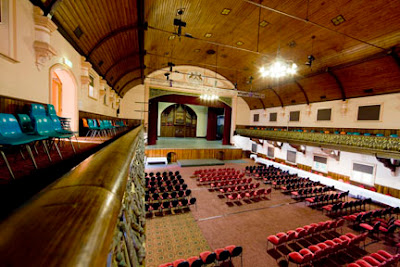The Albert Hall is one of Launceston's most significant heritage buildings due to its high degree of heritage value that is attributed to the Classical Victorian style of monumental public architecture. The Hall covers an area of 14,000 square feet and was recognized at the time as the world’s 11th largest building.
The Brindley Air Organ, situated in the Great Hall is Australia's largest surviving organ pre-dating 1860. Built of local timbers including blackwood and huon pine, the organ's bellows are lined with original kangaroo skin. Believed to be the only one of its type in the world when installed in the Mechanics Institute, the organ originally was hand blown by two strong men or one exceptionally strong man. In being relocated to the Albert Hall in 1892, a water-powered bellows mechanism, and a new Blackwood front, was installed by Fincham and Hobday of Launceston.
Following a period of sad neglect, when the instrument became unplayable, it was completely restored by Keith Davis of Launceston and this work was completed in 1980. The actions and soundboards were restored, a new electric blower fitted to supplement the restored hydraulic engine, and the pipework repaired and fitted with tuning slides. The final regulation of the pipework was carried out by George Fincham & Sons, Melbourne, with Knud Smenge responsible for the tonal finishing.
The Albert Hall has been used for exhibitions, balls, concerts, religious and political rallies, sporting events, and disaster relief during the 1929 flood. Situated on the corner of Tamar and Cimitiere Streets, the Albert Hall is owned by the Launceston City Council and currently operated by the TLA Group.
The Albert Hall is a landmark of Launceston and has strong ties to the local community and is one of the largest convention venues in the region. The Great Hall, Tamar Valley and John Duncan rooms are hired for a vast array of events, from school balls, university graduations and awards nights, to antiques fairs, concerts and major conferences. There is also an adjacent cafe overlooking City Park.
Main Text & Information Source –
Australian Heritage Database














